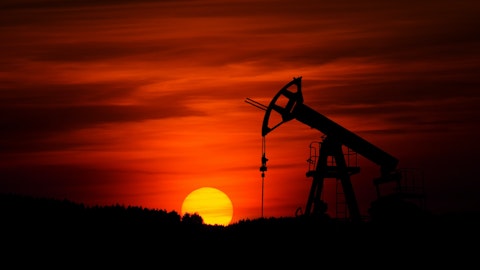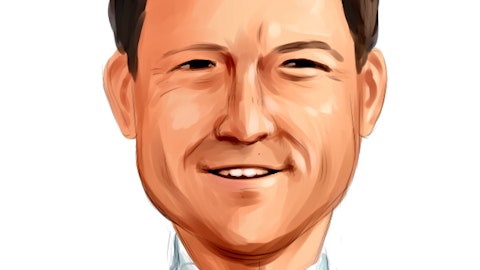William Pate: Sure. And yes, you’re correct, Matthew. The distribution is related to the refinancing. We essentially completed $160 million funded facility, and that took out $135 million in liabilities and permitted $25 million in distribution. So we’re getting our pro rata share. Going forward, the facility will permit distributions to the extent of a minimum asset coverage ratio, which is based on the NPV of the reserve base and then the level of debt. The company continues to perform well and actually, in particular, they benefited from the strong market conditions on the West Coast over the winter, which I think was part of the reason that facilitated this distribution. I wouldn’t expect distributions to be more common than annual. But based on an early February strip and current hedge levels, we would expect to receive distributions in most shares going forward just subject to our drilling investment levels.
Matthew Blair: Any sense based on current strip on what a 2023 distribution might look like to Par?
William Pate: Not at this point. It’s really going to depend on how much we commit to drilling and that, again, will depend on the strip. So in a somewhat counterintuitive fashion, the lower the price, the more likely there’s going to be a distribution. The higher price, more likely we’re going to put money to work to grow our reserve base, which will probably lead to greater distributions post 2023.
Matthew Blair: Okay. And then my follow-up is on the Washington CFS or clean fuel standard program. I believe that is scheduled to start on January 1, 2023. So I was hoping you could talk about on the refining side, do you anticipate that buying these credits would impact your refining capture rate at Washington going forward? And then on the renewables side, do you see this as a boost to this coprocessing project that you’re working on?
William Monteleone: Sure. So Matthew, I think what we’ve observed is that the clean fuels or the kind of aspects of Washington is operating very similar to the way it does in California, where it’s similar to the kind of cap at the rack impacts. And so it’s principally impacting rack pricing versus the wholesale sub-octane price that you see that OPIS publishes. So I think, again, this is largely a rack impact versus a wholesale price impact. So that’s the first part. So I wouldn’t expect major impacts to capture. It will likely impact working capital and some other items as we think about the overall multiyear settlement time frames that will play out in this. So again, I think another environmental credit kind of scheme where we’re going to need to manage the overall balances, but I think we feel well positioned to ultimately recoup the cost of that given our strong logistics network.
And then I think in terms of the coprocessing project, the state is still very early in rolling out some of the specifics around the regs and the way the coprocessing is going to function. So I think TBD on whether coprocessing will qualify for ultimately reducing the carbon intensity of the fuel. But logic would tell you it should over time.
Operator: Our next question will come from John Royall with JPMorgan.
John Royall: So my first question is on maintenance and CapEx. I know you have no major maintenance this year. How should we expect the maintenance cycle to look once Billings is complete? With the fourth refinery, can you stagger them so you maybe have one major turnaround per year? And then relatedly, how should we think about the longer-term CapEx and maintenance in this business annually after Billings is complete? I think you said $95 million for Billings. But just an update on how we should think about the entire system, including Billings.





